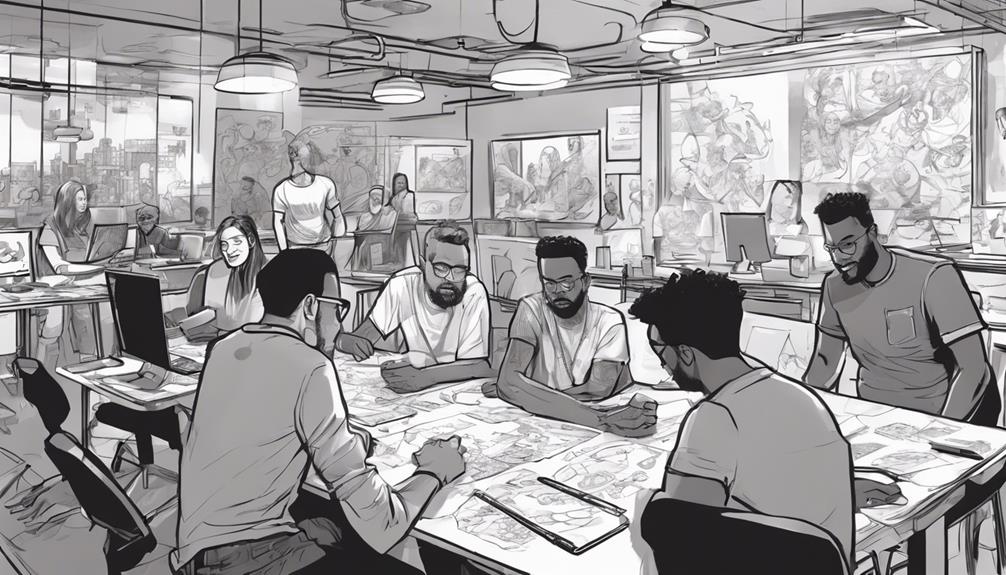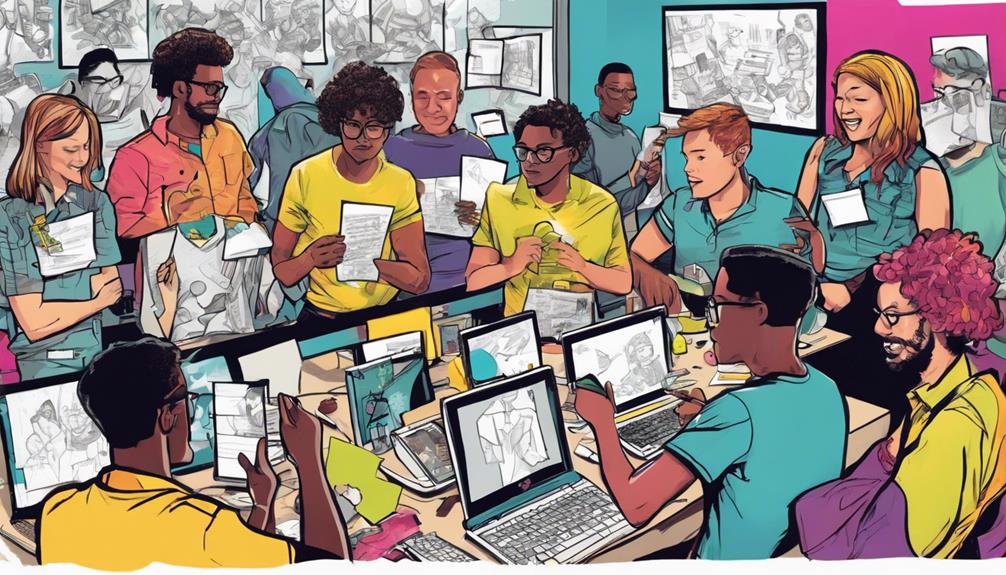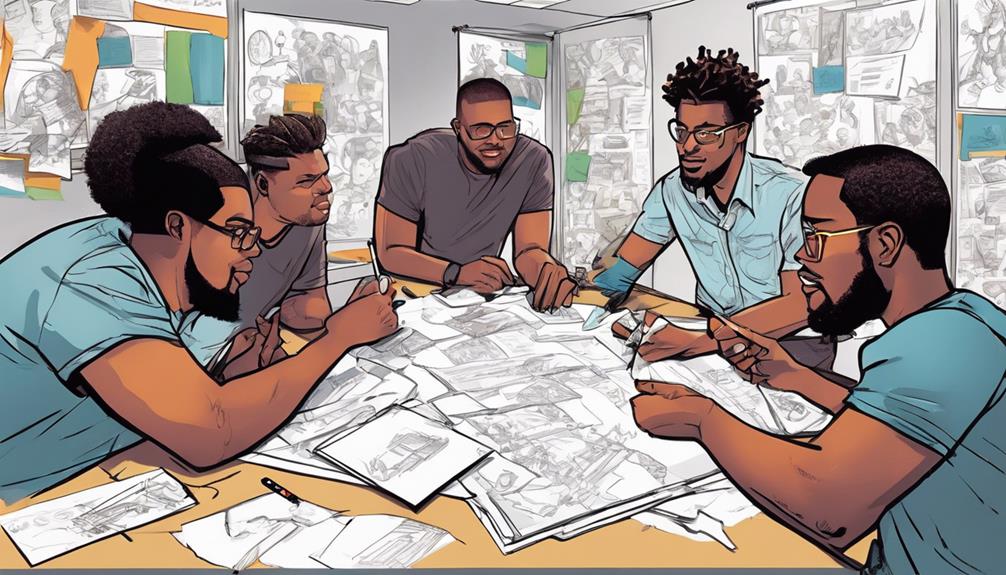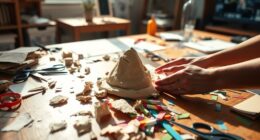IDEO revolutionized design thinking by infusing empathy, collaboration, and iterative prototyping into their process. This transformative approach redefined how innovation is approached and problem-solving is tackled in the design domain. Embracing user-centricity and fostering a culture of creativity have propelled IDEO to the forefront of design innovation. Their impactful projects like the Apple Mouse and collaborations with Ford highlight their industry influence. Explore further into IDEO's journey to see how they mainstreamed design thinking worldwide and continue to shape the future of design methodologies.
Key Takeaways
- Prioritized empathy in problem-solving transformed innovation processes.
- Introduced dynamic ideation methods for creative solutions.
- Emphasized user-centricity for resonant and impactful designs.
- Fostered diverse perspectives for innovative outcomes.
- Led the mainstream acceptance of design thinking as a transformative tool.
IDEO's Human-Centered Design Approach
IDEO's human-centered design approach prioritizes users in problem-solving, guaranteeing solutions resonate with their needs and behaviors. This design thinking methodology, pioneered by IDEO, revolves around empathy, collaboration, and iterative prototyping.
By immersing themselves in the users' experiences and understanding their perspectives, IDEO designers can uncover insights that lead to innovative solutions. Empathy is crucial in this approach, as it allows designers to truly grasp the challenges and desires of the end-users. Additionally, the emphasis on collaboration ensures that diverse perspectives are considered, leading to more thorough and effective solutions.
Through iterative prototyping, IDEO designers continuously refine their ideas based on user feedback, resulting in products and services that aren't only functional but also deeply resonate with users on a global scale. IDEO's human-centered design approach has revolutionized the industry by prioritizing human needs and experiences in the design process.
Impact on Innovation and Problem-Solving

You can witness a transformation in how innovation blossoms through empathy when using IDEO's design thinking approach.
Problem-solving becomes dynamic and fruitful with the infusion of creative ideation methods.
Additionally, the emphasis on user-centricity through prototyping guarantees solutions that truly resonate with the intended audience.
Innovation Through Empathy
By prioritizing empathy in design thinking, organizations have discovered new pathways for innovation and problem-solving, fundamentally reshaping the way solutions are conceived and executed.
IDEO's human-centered design approach, rooted in empathy, has been a driving force behind the creation of user-centric solutions and products. Companies that embrace empathy-driven design principles have shown notably better financial performance, outperforming the S&P 500 by 219%.
- Enhanced User Experience: Empathy allows designers to deeply understand the needs and emotions of users, leading to more intuitive and impactful solutions.
- Fostering Creativity and Collaboration: Empathy in design encourages diverse perspectives and collaboration, sparking creativity and innovation within teams.
- Market Success: Research indicates that empathetic design thinking correlates with higher market success rates, demonstrating the tangible benefits of prioritizing empathy in the innovation process.
Problem-Solving With Ideation
Embracing ideation as a fundamental aspect of design thinking revolutionizes problem-solving by fostering a culture of creativity and innovation. IDEO's emphasis on ideation has been instrumental in enhancing innovation and problem-solving processes. Through brainstorming sessions, creative workshops, and diverse perspectives, IDEO has transformed design thinking by generating a wide range of solutions. The impact of ideation is evident in IDEO's successful track record of projects that offer transformative solutions to complex challenges. By prioritizing ideation, IDEO has set a benchmark for how design thinking can effectively drive innovation.
Ideation at IDEO goes beyond traditional problem-solving methods, encouraging teams to think outside the box and explore unconventional ideas. This approach not only sparks creativity but also guarantees that a variety of perspectives are considered when generating solutions. The collaborative nature of ideation fosters an environment where innovation thrives, leading to breakthrough concepts and groundbreaking designs. Through ideation, IDEO has revolutionized problem-solving by infusing it with creativity and a relentless pursuit of innovative solutions.
Testing for User-Centricity
Testing for user-centricity has become a cornerstone in IDEO's approach to revolutionizing innovation and problem-solving through design thinking. IDEO's emphasis on user-centric design guarantees that products and services effectively meet users' needs.
By prioritizing real user feedback through user testing, IDEO has been able to refine and iterate on solutions, leading to the creation of successful products and services that resonate with customers.
This approach hasn't only driven market success but has also helped companies outperform the S&P 500 by 219%, showcasing the tangible benefits of prioritizing user-centric design.
By integrating user feedback into the design process, IDEO has set a standard for human-centered design that prioritizes the end user's experience.
- User-centric design guarantees products meet users' needs effectively.
- User testing helps refine and iterate on solutions based on real user feedback.
- Successful products and services are created when user-centricity is prioritized in the design process.
Evolution of Design Thinking Methodology

You'll explore the evolution of design thinking methodology, tracing key milestones that have shaped its development over the years.
From its inception in the 1990s to IDEO's pivotal role in popularizing the approach, you'll uncover the significant shifts that have influenced the methodology's growth.
Stanford's d.school and IDEO U have also played essential roles in advancing design thinking, highlighting the continuous evolution and expansion of its principles.
Methodology Evolution Overview
The evolution of design thinking methodology has been pivotal in reshaping approaches to problem-solving across various industries. As design thinking has evolved over the years, several key changes have shaped its current form:
- Human-Centered Approach: IDEO's emphasis on human-centered design has been a driving force behind the evolution of design thinking methodology. Putting the end-user at the center of the design process ensures solutions meet real needs effectively.
- Multidisciplinary Collaboration: The evolution of design thinking has highlighted the importance of multidisciplinary teams working together. IDEO's promotion of diverse skill sets coming together to tackle complex problems has become a cornerstone of successful design thinking projects.
- Industry Adoption: The evolution of design thinking methodology has seen widespread adoption across tech, business, and social-impact sectors. IDEO's influence and the contributions of institutions like Stanford's d.school have played an essential role in mainstreaming design thinking practices.
Key Milestones Highlighted
Highlighting the evolution of design thinking methodology are key milestones that have greatly influenced problem-solving approaches in various industries. Tim Brown's pivotal article in 2008 played an essential role in popularizing design thinking, emphasizing a human-centered approach that resonated with many.
IDEO's formalization of design thinking in the early 2000s set the stage for a revolution in problem-solving practices, with companies leveraging this methodology outperforming the S&P 500 significantly. Additionally, Stanford University's research highlighting the collaborative and innovative benefits of design thinking further solidified its importance in the business world.
The establishment of design-focused institutions like the Hasso Plattner Institute and Stanford d.school, along with platforms such as IDEO U, have also contributed to the widespread adoption of design thinking principles in various sectors. Through design consulting and educational initiatives, these milestones have reshaped how organizations approach innovation and problem-solving, fostering a culture of creativity and empathy in the process.
IDEO's Collaborative Design Culture
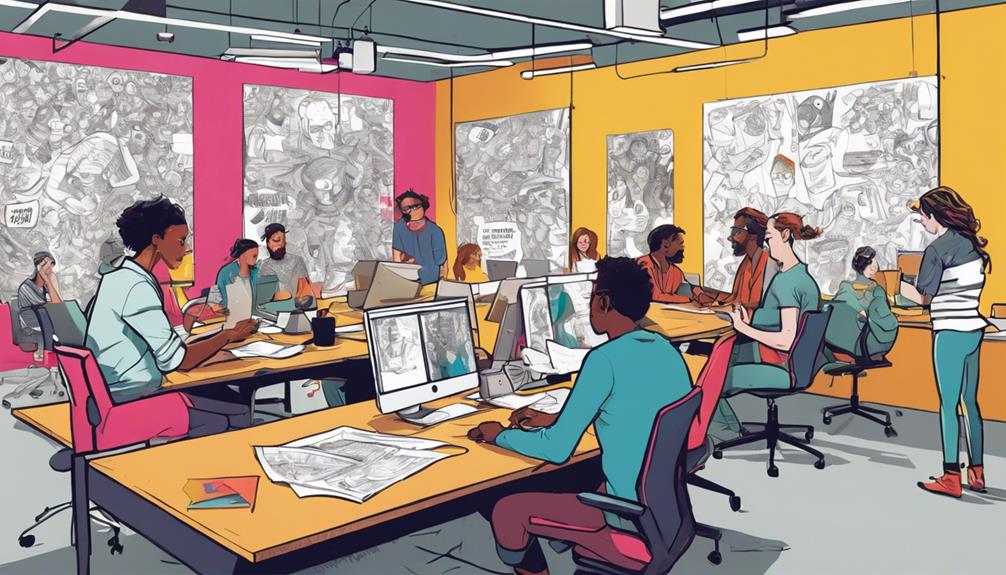
Embracing a collaborative design culture, IDEO thrives on the power of diverse perspectives and knowledge sharing among its team members. In an inclusive design environment, the company challenges assumptions and fosters creativity, resulting in innovative solutions that drive impactful outcomes.
Collaboration is at the core of IDEO's success, leading to refined solutions and fresh ideas that push the boundaries of traditional design thinking. The collective power of diverse minds enriches the design process, enhancing problem-solving capabilities and ensuring that projects meet the needs of a wide range of users.
- Diverse Perspectives: IDEO values input from individuals with varied backgrounds and experiences, leading to rich and multifaceted solutions.
- Knowledge Sharing: The organization emphasizes the importance of sharing insights and expertise across teams to foster continuous learning and growth.
- Innovative Ideas: By encouraging creativity and experimentation, IDEO cultivates an environment where breakthrough ideas can flourish, driving successful project outcomes.
Notable Projects and Industry Influence

IDEO has left a lasting mark on the design industry through a series of notable projects and influential collaborations. Their philosophy of human-centered design has been evident in groundbreaking product design endeavors such as Apple's First Mouse, which redefined computer-human interaction.
Collaborating with Ford on the SYNC in-car system showcased IDEO's significant industry influence in shaping automotive technology. Additionally, IDEO played a pivotal role in establishing Stanford d.school, a cornerstone in global design education, highlighting their impact on the design thinking process.
Projects with Apple not only influenced design language but also demonstrated IDEO's ability to drive innovation across various industries. Their diverse portfolio of projects spanning from technology to automotive sectors showcases the innovation firm's role in shaping problem-solving methods and fostering creativity.
Through these collaborations and projects, IDEO continues to push boundaries and influence the design landscape with their human-centric approach and forward-thinking strategies.
IDEO's Role in Mainstreaming Design Thinking

By championing human-centered design principles, IDEO has greatly advanced the mainstream acceptance of design thinking as a transformative methodology for innovation and problem-solving. IDEO's innovative approach to design thinking has notably influenced how businesses and organizations tackle complex challenges and drive creativity.
Through their emphasis on collaboration and user-centric design, IDEO has helped popularize the idea that putting people at the center of problem-solving processes leads to more effective solutions.
- IDEO's global impact: The firm's efforts have transcended borders, making design thinking a universal language for innovation.
- Business adoption: IDEO's work has encouraged businesses to incorporate design thinking principles into their strategies to enhance efficiency and competitiveness.
- Recognition as a transformative tool: IDEO's advocacy for design thinking has led to its widespread recognition as a powerful tool for addressing a wide range of issues in various industries.
Frequently Asked Questions
Did IDEO Invent Design Thinking?
No, IDEO did not invent design thinking. However, its pioneering work in emphasizing human-centered design and multidisciplinary problem-solving greatly influenced the formalization and widespread adoption of design thinking practices across various industries.
How Does IDEO Look at Design Thinking Process?
When you look at the design thinking process, IDEO sees it as a transformative journey that involves understanding user needs deeply, generating creative ideas, prototyping rapidly, and refining iteratively. It's like a magical innovation rollercoaster!
What Is the Difference Between the IDEO Method of Design Thinking and That of the Stanford Design School?
The difference between the IDEO method and the Stanford d.school approach lies in their emphasis: IDEO focuses on practical solutions and rapid prototyping, while Stanford d.school prioritizes creativity, empathy, and collaboration.
What Is the Unique Approach That IDEO Uses to Come up With Innovative Ideas?
To generate innovative ideas, IDEO employs a brainstorm tornado, blending human-centered design with diverse collaboration. They iterate on concepts through prototyping and testing, prioritizing empathy, creativity, and user feedback for effective problem-solving.
Conclusion
To wrap up, IDEO has truly changed the game when it comes to design thinking. Their human-centered approach hasn't only sparked innovation but also transformed the way we solve problems.
With their collaborative culture and impactful projects, IDEO has raised the bar for the entire industry.
It's safe to say, they've set the standard high and left their mark on the world of design.
